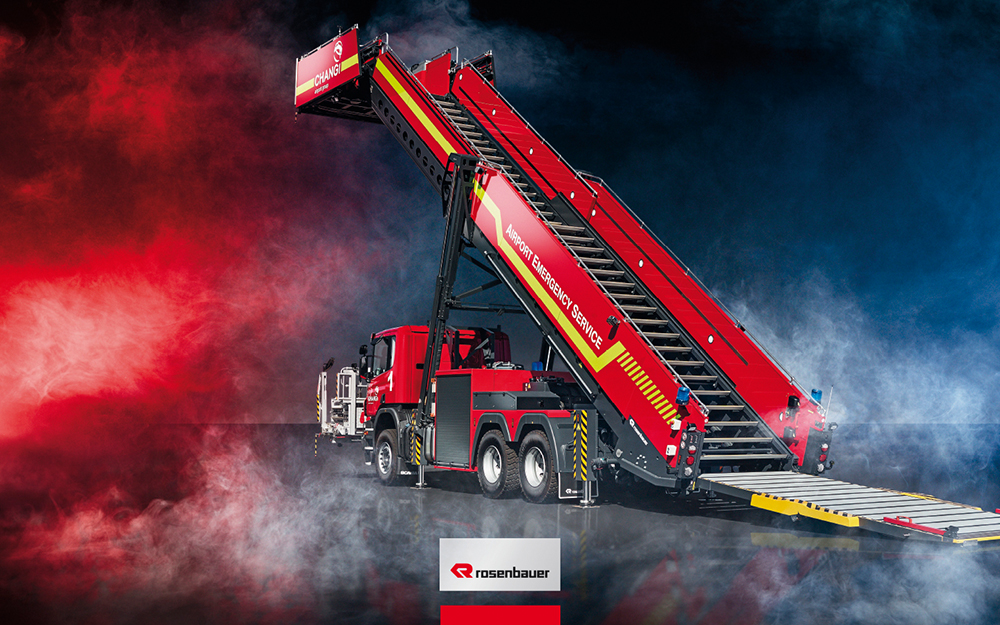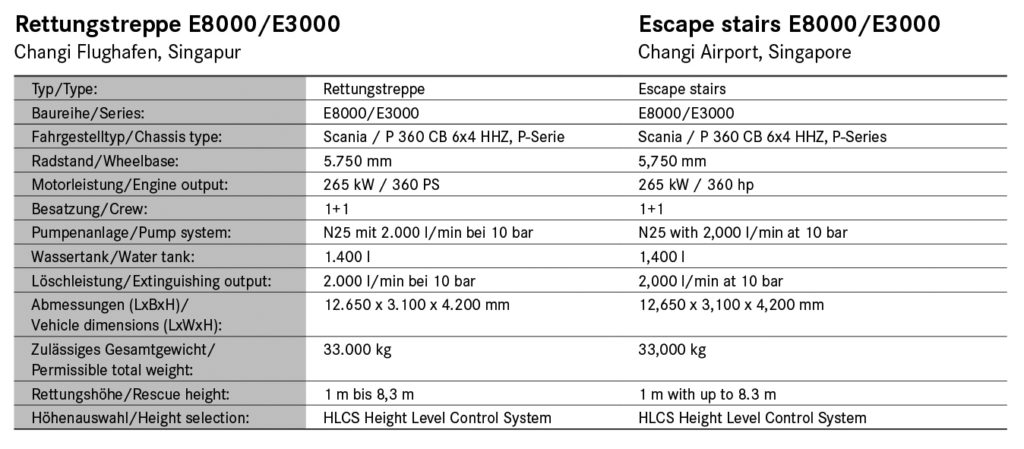Long before the first flight of the new Super Jumbo Jet, Airbus A-380 in April 2005, Changi Airport Emergency Service, always known as one of the most progressive Airport Fire and Rescue Services, was looking at the increased challenges such enormous airplane will have.
Not only the fire fighting performance of their conventional Airport Rescue and Fire Fighting (ARFF) vehicles had to be increased to match the additional fuel carried as well as the extreme size of the airplane but especially the emergency evacuation of such huge airplane was identified as a great challenge. An A-380 with maximum seating configuration can carry up to 853 passengers and 20 crew. Already on smaller planes with a single passenger deck, an emergency evacuation over the inflatable slides can result in a number of injured passengers. On an A-380, having a lower and upper deck, the risk of injury during evacuation is heavily increased due to the actual height and capacity of the upper deck. During the certification of the A-380, an emergency evacuation had to be performed and even with passengers prepared for such evacuation, numerous injuries occurred.
The challenge for an Airport Emergency Service is exactly this potentially large amount of minor and major injuries during the evacuation over the aircraft escape slides. Not only will the injured passengers take a lot of effort from the emergency crews, additionally will severely injured passengers have to be transported to nearby hospitals. For this purpose, a fleet of Ambulances will have to enter the airport and by doing so, they will breech the safety zone of the airport resulting in an immediate shutdown of all aircraft operations.
For an airport like Singapore Changi International Airport, with about 60 million passengers per year, such complete shutdown would not only be a huge image problem, but also a massive financial loss. Therefore the Airport Emergency Services shall do everything possible to avoid such a total shutdown and keep at least the other, not in the accident involved runways in operation.
For that reason, the Changi Emergency Airport Services, Rosenbauer International and SK Rosenbauer Singapore got together in 2004 to find a potential solution to allow a fast and effective evacuation of a Super Jumbo without the use of emergency slides. The idea of an rescue stair system was born together. The order to build two Rescue Stairs E8000 was placed with SK Rosenbauer in October 2005 and the two vehicles went into service in September 2005, even before the first A-380 was put into service by Singapore Airlines.
On November 4, 2010 an A-380 of Qantas Airlines, flight QF32 had an uncontained engine failure after departure and returned to Changi Airport, causing full emergency action. The Rescue Stairs E8000 had its first baptism of fire and it performed perfectly. All 469 passengers and crew members left the severely damaged aircraft unharmed.
On June 27, 2016 another severe incident occurred. Singapore Airlines SQ386 returned to the airport after an engine oil warning and the engine caught fire during landing. Emergency Services avoided a slide evacuation and the E8000 performed again as intended. There were no injuries reported among the 241 passengers and crew.
After 12 years of excellent service, it was time to replace the first generation Rescue Stairs. Rosenbauer again was awarded to build two units and since early 2018, the second generation Rescue Stair E8000 is in service at Changi International Airport
Whenever we fly, and I fly often, we hope that there is no incident. But landing at Changi Airport, I know, in case of an incident, the new E8000’s are ready to evacuate!


Leave A Comment